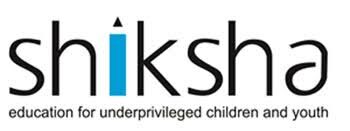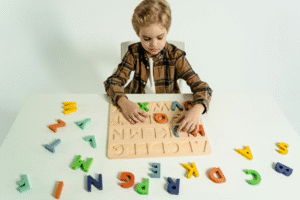The WOOP Method: A Practical Framework for Student Goal-Setting and Growth

Helping students learn how to learn is as important as teaching what to learn. One key skill that often gets overlooked is goal-setting: the ability to identify a meaningful target, anticipate obstacles, plan next steps, and persist toward success. The evidence-based WOOP method (Wish, Outcome, Obstacle, Plan) offers a structured way to embed goal-setting in classrooms—empowering learners to take ownership of their progress and build the habits that support academic growth. Read on to explore how WOOP works, why it matters, and how to implement it effectively with learners of all ages.
What is the WOOP Method?
The WOOP acronym stands for:
. Wish
What do you genuinely want to achieve? This is not a vague hope, but a clear, meaningful, realistic challenge.
. Outcome
What is the best result from achieving that wish? What would you feel, see, or experience? Visualising the outcome helps build motivation.
. Obstacle
What stands in your way? Importantly, the obstacle is internal—it’s about thoughts, feelings, or habits you can control.
. Plan
What will you do when that obstacle shows up? Use an “if-then” format: If [obstacle], then I will [action]. This links intention to action.
What makes WOOP powerful is what it skips: it doesn’t rely solely on positive thinking or wishful hoping. Instead, WOOP uses mental contrasting—visualising both the desired outcome and the potential obstacle—combined with implementation intentions, or a clear action plan. This evidence-based approach, increasingly integrated into Degree Programs in Malaysia, helps students strengthen focus, resilience, and long-term goal achievement.
Why WOOP Works for Students
Take a look at how the WOOP method helps students turn motivation into action by combining clear goals with realistic planning and problem-solving.
1. Builds Self-Efficacy and Ownership
When students articulate their own wishes and plan the action, they take ownership of the learning process. Rather than a teacher handing a target, the learner actively engages with it. WOOP builds self-regulatory capacity—students ask themselves: What do I want? What stops me? What will I do?
2. Moves Beyond Nice Wishes to Real-World Action
Many goal-setting activities stop at the wish. But WOOP pushes further: By naming the obstacle AND making a concrete if-then plan, students transform a vague hope into a structured commitment. Research indicates this shift increases completion of tasks such as homework, improves attendance, and enhances engagement.
3. Enhances Persistence and Resilience
Because students anticipate what might go wrong and pre-plan a response, they are better equipped when setbacks occur. The plan acts as a cognitive anchor during challenge—rather than abandoning the goal when things get tough, the student has a lifeline.
4. Adaptable to Different Ages and Contexts
The Panorama article highlights that WOOP works across K-12, in groups, individually, and even for adults. Whether you’re working with early-years pupils or older secondary students, the structure of WOOP can be scaled to age, complexity, and context.
How to Introduce WOOP in the Classroom
Here is a step-by-step process on how you can introduce and implement WOOP in your classroom:
Step 1: Model the Process
Begin by modelling WOOP as a teacher or facilitator. For example:
Wish: I want to finish my planning for next week by Friday afternoon.
Outcome: I’ll feel prepared, less stressed, and more creative on Monday morning.
Obstacle: I often get distracted by other emails and tasks and don’t prioritise planning.
Plan: If I notice an email notification pop up, then I will mute notifications and focus on planning for 25 minutes before returning to the email.
Walk students through the process, talk aloud about the obstacle and the plan—you’re showing that obstacles are normal and planning matters.
Step 2: Student WOOP Activity
Give students a simple worksheet or template with the four prompts (Wish / Outcome / Obstacle / Plan). Allow time for reflection. Encourage them to choose a goal that is meaningful but realistically challenging (avoid trivial or impossible wishes). Use your class context: maybe a unit target, a behaviour goal, or a personal learning goal.
Step 3: Pair and Share
After they draft their WOOP, students can share with a partner: what is your wish? What do you anticipate will block you? What is your plan? Pairing adds accountability and social reinforcement.
Step 4: Integrate into Routine
Rather than doing it once, embed WOOP into your routine. For example: Begin each term, revisit at mid-term, and connect to reflection sessions. You might ask students: “What did your plan say? Did you act on it? What obstacle came up? What will you adjust?” The follow-up is key—it turns goal-setting into goal-pursuit.
Step 5: Link to Wider Learning and Pathways
If you’re teaching in an academic institution where students are on broader learning journeys—such as those exploring Degree Programs in Malaysia with varying pathways and connections—WOOP gives a scaffold to help them plan across subjects, reflect on obstacles (time management, language barriers, cultural adjustment), and implement personal actions.
Bottom Line
Whether you’re helping younger learners build study habits or guiding older students planning their progression toward a Bachelor of Education in Pre and Primary Education, WOOP fosters self-regulation, reflection, and continuous growth. By modelling the process, embedding regular check-ins and linking goals to action, educators can help students set meaningful aims, anticipate real-world barriers and produce actionable plans that stick.





